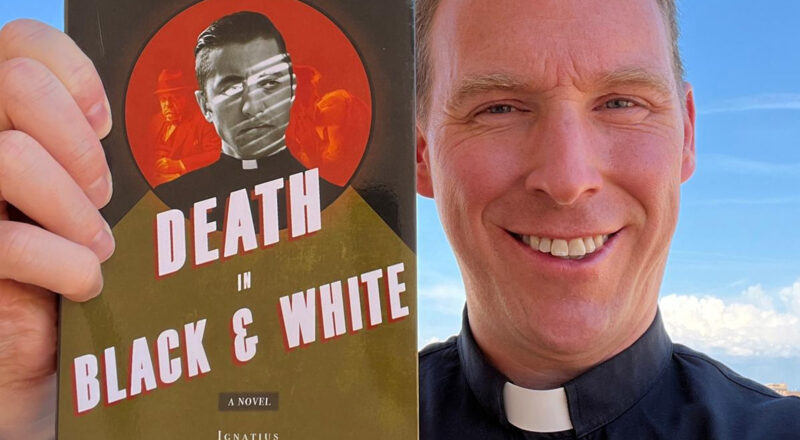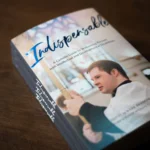The last two semesters, I have taught bioethics. In that class, the whole second week focused on human dignity being intrinsic and based on being made in the Image of God. Dignity comes from being human, not from some secondary quality. Ultimately, dignity points back to something that comes from God. When I read Dignitas Infinita today (the day it came out), it struck me how it repeated a lot of this and went deeper on several points. This will be my first post on Dignitas Infinita, and I hope to post something on the particulars later.
This fundamental principle is key for understanding Catholic morality. Without it, it is hard to understand much of Catholic social doctrine and bioethics. We often like the headlines about the hot-button issues, but getting a fundamental understanding of key concepts is more important for the average Catholic. This post will only deal with the fundamental concerns around human dignity. It will also only focus on the text of Dignitas Infinita. For an outline, I will take what DI uses as four types of dignity in paragraphs 7 and 8: “Ontological dignity, moral dignity, social dignity, and existential dignity.” (7) After those 4, I will briefly discuss distortions of dignity noted in the document.
Ontological Dignity

In paragraph 7, Dignitas Infinita explains this: “Ontological dignity belongs to the person as such simply because he or she exists and is willed, created, and loved by God. Ontological dignity is indelible and remains valid beyond any circumstances in which the person may find themselves. (“Ontological” means referring to being itself, so this is a dignity based simply on being an individual member of the species homo sapiens.)
This dignity refers us back to Genesis: “God said, ‘Let us make man in our image, after our likeness…” So God created man in his own image, in the image of God he created him; male and female he created them.” (Genesis 1:26-27) DI notes about this: “To be created in the image of God means to possess a sacred value that transcends every distinction of a sexual, social, political, cultural, and religious nature. Our dignity is bestowed upon us by God; it is neither claimed nor deserved. Every human being is loved and willed by God and, thus, has an inviolable dignity.” (11) Later, it notes that the Creator “has imprinted the indelible features of his image on every person,” (18) so this image has features we can detect.
This ontological dignity is based simply on being human, nothing more, nothing less: “Dignity is not something granted to the person by others based on their gifts or qualities, such that it could be withdrawn.” (15) Dignity cannot be based on gifts, qualities, acquired traits, etc. If it was based on anything like that, humans could lose dignity, which goes contrary to the whole concept.
Christ Deepens This Dignity
Jesus raises the dignity of humans. He is the uncreated image of God and we are images in his image. Dignitas Infinita notes, “The dignity of the human person was revealed in its fullness when the Father sent his Son, who assumed human existence to the full.” (19) He elevates our dignity to his dignity as the second person of the Trinity.
By his life, death, and resurrection to save us from sin, Jesus shows the infinite dignity of each person. Each person was worth dying for. He would have done all that just for me alone.
This ontological dignity is the ultimate basis for dignity and the most fundamental of the four types.
Moral Dignity
In paragraph 7, Dignitas Infinita notes “moral dignity refer[s] to how people exercise their freedom.” It continues, noting how acting contrary to our conscience goes against dignity. A maniacal criminal has lost part of their dignity by constantly choosing contrary to dignity and love. Unlike ontological dignity, we can lose or gain moral dignity. Our choices make our moral dignity. Nobody can take it from you, but you can choose to eliminate it.
Later, it notes that such moral dignity is based on objective law, not subjective standards. Dignitas Infinita 26 notes, “Human dignity helps to overcome the narrow perspective of a self-referential and individualistic freedom that claims to create its own values regardless of the objective norms of the good and of our relationship with other living beings.” This points back to a view of natural law where we participate in God’s wisdom. To really be dignity, it must be objective and above any human ability to change. Any subjective standard fails in that regard.
Social Dignity
Paragraph #8 explains this as the most extrinsic dignity of the 4: it can be most affected by others’ actions towards you. It explains, “social dignity… refer[s] to the quality of a person’s living conditions.” A person loses this dignity when enduring extreme poverty. Certain ways of living go contrary to ontological dignity: we fail to give people the dignity that is their due. This is brief here, but it comes back later in the practical part of the document.
Existential Dignity
This is the dignity pointing to our final end. It is the dignity of joy, peace, and hope. It is internal but we can lose it like moral dignity, but its basis is one’s perception of reality, not moral choices. One can lack this even if one has all the material means of a good life. Paragraph 8 calls existential dignity “the type of dignity implied in the ever-increasing discussion about a ‘dignified’ life and one that is ‘not dignified.'”
Dignitas Infinita notes, “Every individual possesses an inalienable and intrinsic dignity from the beginning of his or her existence as an irrevocable gift.” (22) This sense of gift is key in our perception and thus in existential dignity.
The document also notes that dignity is about our ultimate destiny, where we can be in perfect union with God for all eternity. (20)
Dignitas Infinita on Misunderstandings of Dignity
Dignitas Infinita not only presents a Christian view of dignity but notes the current issues of how others view dignity.
A lot of the issues here are making dignity extrinsic or based on some factor other than simply being human. This comes up almost every week after we discuss it in bioethics. Dignitas Infinita notes, “The Church insists that the dignity of every human person, precisely because it is intrinsic, remains ‘in all circumstances.’ The recognition of this dignity cannot be contingent upon a judgment about the person’s ability to understand and act freely; otherwise, it would not be inherent in the person, independent of the individual’s situation, and thus deserving unconditional respect.” (24)
It also notes the errors of some new inventions of “rights” that go contrary to intrinsic and fundamental rights. Yes, women have the right to choose, but a right of choice cannot trump the right to life. Rights like choice are very secondary rights that can only operate insofar as they do not interfere with more fundamental rights. (25)
Conclusion to the 1st Part of Dignitas Infinita
This first half or so of Dingitas Infinita will likely get less headlines than the later part on hot-button issues. However, I think for the average person, it is key to understand so we can each defend the Church’s teaching on those hot-button issues. We should not only be able to know what the Church teaches, but why she teaches. Delving into fundamental human dignity helps with that. I hope you all found this to be helpful. (I’m not sure when I will have time to follow-up with something on the hot-button issues in this document. If you want to read it yourself, feel free to read Dignitas Infinita.)









[…] less” and cannot be lost or withdrawn because it does not depend on gifts or achievements (Fr. Matthew P. Schneider, LC). It belongs to each person “only because he or she is ‘willed, created, and loved by […]